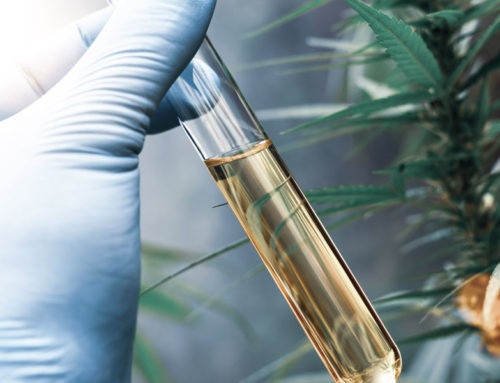Our endocannabinoid system – named after the cannabis Sativa plant that inspired its discovery – supports our health and well-being by playing an integral role in regulating balance in vital aspects of our biology. Hemp and cannabis are different strains of the cannabis Sativa species of plant and both strains contain cannabinoids like THC (Δ9–tetrahydrocannabinol) and CBD (cannabidiol), but the hemp plant has lower concentrations of THC and higher concentrations of cannabidiol (CBD).
The endocannabinoid system’s mechanisms and importance are only recently becoming understood by scientists and researchers, but the endocannabinoid system itself has been evolving over the last 500 million years and is found in other mammals, birds, reptiles, amphibians, and fish. So, what exactly is this ancient system, and how does it work?
Endocannabinoids and the endocannabinoid system
In the 1990s, Israeli scientists discovered that our body produces natural cannabis / hemp-like molecules called endocannabinoids (endo means endogenous; created within our bodies) of which anandamide (AEA) and 2-arachidonoylglycerol (2-AG) are the best known.
The endocannabinoid system (ECS) was later discovered to be the physiological system in our body capable of interacting with these endocannabinoid molecules.
We now know the main function of our endocannabinoid system is to help our body maintain homeostasis — harmony, and balance — in response to changes in the environment, and supports other systems in our body to operate at their peak performance levels.
This physiological system is involved in a wide variety of internal processes, including; pain, memory, mood, appetite, stress, sleep, metabolism and immune function, and has three main components: CB1 cannabinoid receptors, CB2 cannabinoid receptors and metabolic enzymes; fatty acid amide hydrolase (FAAH) and monoacylglycerol lipase (MAGL).
Endocannabinoids, anandamide, and 2_AG, are the compounds our body naturally makes that stimulate our cannabinoid receptors.
What are CB1 receptors and CB2 receptors and do how they work?
CB1 and CB2 cannabinoid receptors are embedded in cell membranes located throughout our bodies, including our:
- Nervous systems
- Immune systems
- Digestive systems
- Endocrine glands
- Skin
- Brains
- Hearts
- Lungs
- Kidneys
- Livers
- Pancreas
- Bones
- Skeletal muscles
- Blood Vessels
- Lymph cells
- Fat cells
- Gastrointestinal tracts
Scientists have also discovered that our endocannabinoids, anandamide and 2_AG’s, have a short half-life, meaning they are made on-demand, when needed, at localized sites.
This is how metabolic enzymes come into the endocannabinoid system picture.
The metabolic enzymes FAAH and MAGL break down endocannabinoids after they are used so that our bodies use the endocannabinoids when needed, and then disposes of them when they are no longer necessary.
And here…is when the cannabis and hemp plants come into play with our endocannabinoid system.
Cannabis and hemp contain plant substances called cannabinoids that stimulate and/or interact with our CB1 and CB2 receptors exerting their effects, in part, by mimicking our endocannabinoids.
The most well-known cannabinoids being CBD (cannabidiol), THC (Δ⁹tetrahydrocannabinol), CBDa, ThCa CBDa, CBN and CBG to name a few.
How do cannabinoids work with our endocannabinoid system?
As part of the endocannabinoid system, endocannabinoid receptors are dispersed throughout our body impacting our physiological processes affecting pain modulation, anti-inflammatory effects, and other immune system responses.
Cannabis and hemp cannabinoids interact with our endocannabinoid system by activating and/or interacting with our CB1 and CB2 cannabinoid receptors.
CB1 receptors are primarily found in the brain and central nervous system, and to a lesser extent in other tissues. CB2 receptors are mostly in the peripheral organs. Especially cells associated with the immune system.
You can think of these receptors as an internal lock and key kind of system in our body.
When you ingest cannabinoids, they interact with this internal system by either binding to and activating cannabinoid receptors or inhibiting cannabinoid receptors.
For example, CBD the “non-intoxicating” cannabinoid, is what science calls a “promiscuous chemical”, meaning it can fit into many different receptors systems within our body and affect each one differently.
This means CBD can either fully activate a receptor, or it can operate as an antagonist whereby blocking the activity of a receptor.
In the case of anandamide, studies show CBD functions as an anandamide reuptake and breakdown inhibitor, which means it raises anandamide levels in our brain’s synapses.
CBD also upregulates and enhances serotonin. Serotonin, sometimes called “the neurotransmitter of happiness” is involved in behaviors as wide-ranging as sleep, cognition, aggression, learning, appetite, and reward activity. CBD’s potentially far-reaching ability to interact with our serotonin receptors is what scientists believe may underlie its anti-anxiety effects.
Why would we need to take cannabinoids if our body is already creating them?
Keep in mind that the endocannabinoid system is a system of “homeostasis” in our body working at a cellular level, supporting other systems to operate at their peak performance levels.
When any of our biological systems are off-balance, producing too much of one thing and not enough of another, there is disease.
It is believed that when our body’s endocannabinoid system isn’t signally and functioning optimally due to a deficiency in endocannabinoid levels, we suffer from what is called Clinical Endocannabinoid Deficiency (CED).
The greatest evidence for Clinical Endocannabinoid Deficiency is shown to be present for migraine, fibromyalgia, irritable bowel syndrome (IBS) sufferers, and many other chronic illnesses.
According to cutting-edge scientists with the U.S. National Institutes of Health (NIH), they have shown that endocannabinoid system dysregulating is in nearly all pathological conditions, saying, “It stands to reason that “modulating endocannabinoid system activity may have therapeutic potential in almost all diseases affecting humans, including neurodegenerative, cardiovascular and inflammatory disorders, obesity/metabolic syndrome, cachexia, chemotherapy-induced nausea and vomiting, tissue injury and pain, among others.”
By modulating and supporting the endocannabinoid system with CBD and other cannabinoids this can slow – or in some cases even stop – disease progression.
What to do if you think you suffer from Clinical Endocannabinoid Deficiency?
Talk to your doctor, physician and other healthcare professional.
If you live in a state where cannabis is not legal, or your doctor, physicians, and other healthcare professional is not knowledgeable about cannabis for medicinal use, you can find many resources online.
The Society of Cannabis Clinicians is a great place to start.




